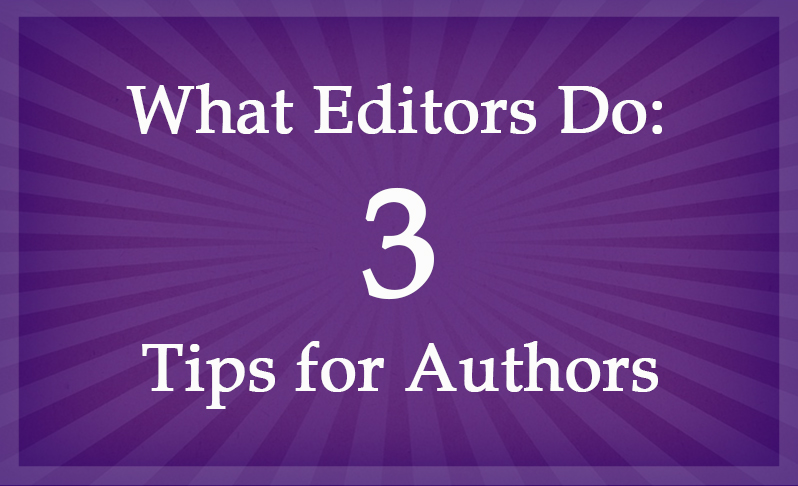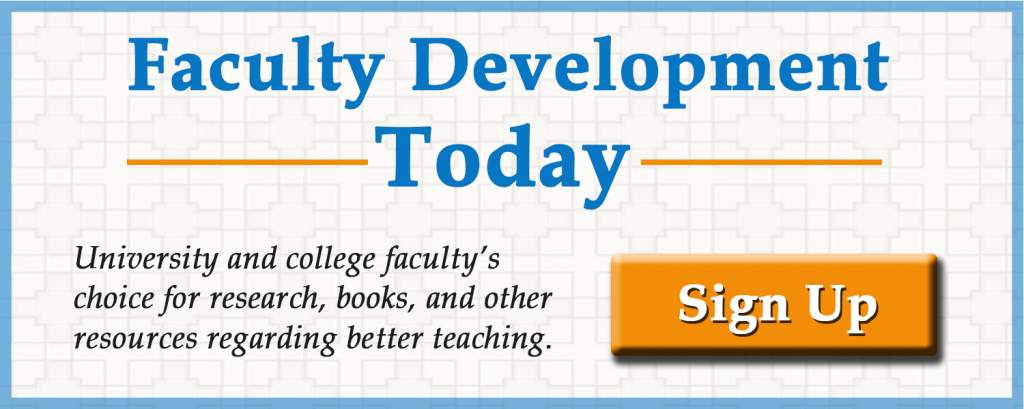I recently spoke with an author whose manuscript had just been accepted for publication in the Journal of Faculty Development. He was very happy to hear the news because he needed more publications for his promotion/tenure dossier. However, his comments clearly indicated that he had little idea about the process of manuscript reviews or the role of the editor who oversees the operation.
Currently there are over 23,000 scholarly, peer-reviewed, print journals and 3,304 electronic-only journals. (Tweet this quote.) Obviously, editorial practices and structures vary widely, particularly across journals in the STEM disciplines and those in the social sciences and humanities. Nonetheless, I believe a few general principles hold true for most scholarly journals and I thought I would share the practices that we follow at the Journal of Faculty Development, and provide three simple tips for scholars who write for publication.
Tip 1: Know the Mission of the Journal
Understand the editor’s vision for the journal you are considering. Since it is bad form to submit to more than one journal at a time, it only makes sense to maximize your scholarly writing efforts by knowing whether your submission addresses the editorial thrust of a given journal. Read the journal’s guidelines, and review the abstracts of the articles being published. Go to the JFD online for this type of information.
Working closely with the publisher, the editor helps craft the journal’s mission, setting standards for publication and deciding on the range and scope of the articles that the journal will publish. These standards guide the editor and peer reviewers in their evaluation of submissions to the journal and are reflected in the “Guidelines for Authors” on the journal’s website. From time to time it may be necessary to modify the journal’s mission to reflect changes in the academic landscape and we effected such a change in 2002 when the Journal of Staff, Program, and Organizational Development (JSPOD) became the Journal of Faculty Development (JFD).
Tip 2: Learn from the Process of Screening Submissions
If the editor chooses not to enter your manuscript into the full review process, learn from your errors. If the editor does not readily explain why he/she rejected your submission, ask for an explanation (since you will obviously have studied the editorial thrust of the journal and you certainly have not written what I call a “zombie manuscript” (one would hope, anyway). (Tweet this quote.)
Perhaps the most important day-to-day activity for me is screening submissions to decide which manuscripts should be sent to the Editorial Board for review. Some submissions simply aren’t a good match for the JFD, in which case I usually suggest more appropriate publishing venues. Other manuscripts repeat topics that have already been thoroughly explored in the literature – frequently in the JFD itself. Journal space is at a premium and I believe it should be reserved for articles that contribute something new or unique to the higher education literature. A few manuscripts are so badly flawed that they are unsuitable for any scholarly journal (e.g., unimportant subject matter, flaws in methodology, execrable writing, etc.). These “zombie manuscripts” are the easiest ones to reject.
Tip 3: Embrace the Final Decision on Publication
Glean information from the reviews you receive for self-improvement. Scholarly writing is like a journey, which young scholars will be wise to begin pragmatically. (Tweet this quote.) Whether your submission is accepted or rejected, carefully read the editor’s and reviewers’ comments, take them to heart, and see whether you can apply them to further your journey.
Manuscripts that pass the editor’s review are sent to three peer reviewers for in-depth evaluation. The JFD follows the policy of double-blind reviews in which the identity of the author is unknown to the reviewers and vice-versa. This practice is common in the social sciences and humanities but not in the STEM disciplines. A reviewer can decide to accept the manuscript without alteration (which rarely occurs), suggest minor revisions, require major revisions, or reject the paper altogether. Peer reviewers generally agree about the quality of a given manuscript although they often suggest different kinds of revisions. However, sometimes they disagree strongly and their ratings run the gamut from “accept” to “reject.”
Long, detailed, thoughtful reviews make my job much easier, but in any case I study all the comments and suggestions carefully, re-read the original manuscript, and attempt to arrive at a fair judgment of the value of the work. The vast majority of manuscripts require some revisions – limited or extensive — and my job is to communicate the nature and extent of the desired changes to the author. To accomplish that task, I send authors the reviewers’ raw comments, provide advice about how to proceed with the revisions, and invite them to correspond with me if they have questions about how to follow these guidelines. When the revisions are completed, the authors send their manuscripts to me for one final reading before I send them to New Forums for publication.
I’ve been editor of the JFD for seventeen years and (on the whole) I’ve enjoyed the experience immensely. I’ve learned a lot about editing by practicing the craft. Moreover, the work keeps me abreast of developments in the field and allows me to play a role in disseminating information that may improve practices in higher education. However, my greatest pleasure is being able to help young scholars publish their manuscripts and (I hope) to facilitate their academic careers.
Author
 Edward Neal, Ph.D., is retired as director of the Center for Faculty Development, University of North Carolina – Chapel Hill. He now is active as a professional development consultant. Meet Ed.
Edward Neal, Ph.D., is retired as director of the Center for Faculty Development, University of North Carolina – Chapel Hill. He now is active as a professional development consultant. Meet Ed.



